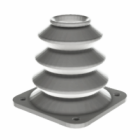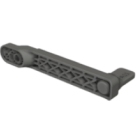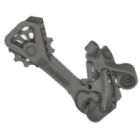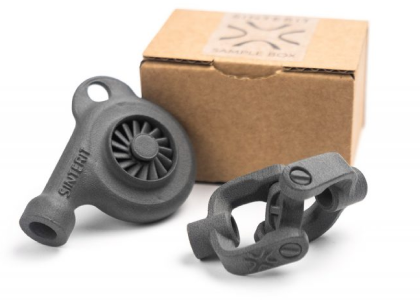Polymers in 3D printing
When people ask, “do 3D printers use plastic?”, the short answer is: absolutely — and in many different forms. In fact, polymers are by far the most commonly used materials in 3D printing today. They’re affordable, versatile, and compatible with a wide range of additive manufacturing technologies. From beginner-level desktop printers to high-performance industrial machines, 3D printing polymer materials power everything from prototypes to production-grade parts.
Let’s take a closer look at what makes polymers so central to the 3D printing ecosystem.
What plastic is used in 3D printing?
A wide variety of plastics are used in 3D printing, but the most common ones are thermoplastics — materials that soften when heated and solidify when cooled. These plastics can be re-melted multiple times, making them ideal for both extrusion-based and powder-bed technologies.
Below, you’ll find the key categories of materials that are most commonly used across different 3D printing technologies.
ABS, PLA, and PETG — common in FDM
These are the “everyday” filaments for Fused Deposition Modeling (FDM) printers:
- PLA is biodegradable, easy to print, and great for concept models and low-stress parts,
- ABS offers better strength and thermal resistance, but requires a heated chamber to prevent warping,
- PETG strikes a balance between flexibility and strength and is favored for functional, moisture-resistant components.
These materials are widely available, cost-effective, and supported by virtually all FDM printers — making them the default choice for many users.
PA12 and PA11 — common in SLS
In Selective Laser Sintering (SLS), the go-to polymers are powdered nylons:
- PA12 (Nylon 12) is known for its excellent mechanical strength, durability, and chemical resistance, it delivers high precision, dimensional stability, and impact tolerance — making it ideal for functional prototypes, brackets, housings, and short-run production parts,
- PA11 is a bio-based alternative to PA12, offering slightly more flexibility and elongation at break, which is valuable in applications requiring toughness and fatigue resistance.
Both are engineered for laser sintering, with powder characteristics tuned for flowability, uniform fusion, and recyclability within the SLS process.
TPU — flexible materials
TPU (Thermoplastic Polyurethane) is used in both FDM and SLS systems, offering rubber-like flexibility, elasticity, and abrasion resistance. It’s commonly chosen for:
- seals and gaskets,
- wearables and footwear components,
- shock-absorbing parts,
- custom-fit orthotics.
TPU requires careful tuning during printing due to its softness and retraction sensitivity, but it’s an essential polymer for any application requiring flexibility and impact absorption.
Resin types — SLA & DLP
In light-based technologies like SLA (Stereolithography) and DLP (Digital Light Processing), the materials used are photopolymer resins — liquids that solidify under UV light. These are not thermoplastics, but thermoset polymers, meaning they permanently cure and cannot be melted again.
Resin types include:
- standard resin – for visual models and general-purpose parts,
- tough resin – for higher strength and impact resistance,
- flexible resin – mimics rubber-like softness,
- castable resin – burns cleanly for investment casting,
- biocompatible resin – for medical, dental, and skin-contact applications.
Each resin is carefully formulated to balance viscosity, cure speed, and mechanical performance, with some specialized for transparency, heat resistance, or elasticity.
Can 3D printers print polymers?
Yes — not only can 3D printers print polymer, it’s what most of them are specifically built for. Across the board, polymer-based printing technologies dominate the market due to their low cost, material versatility, and excellent printability. Whether you’re working with filament, powder, or resin, nearly all consumer and professional 3D printers are optimized for polymers in some form.
The role of 3D printing polymer materials
Polymers aren’t just beginner materials — they’re used at every level of the 3D printing industry. From rapid prototyping and visual models to functional production parts, polymer materials offer the mechanical performance, design freedom, and surface finish that modern product development requires.
Whether you’re building a housing for electronics, a flexible wearable component, or a medical-grade guide for surgery, there is a polymer for your purpose — and a printing method to match it.
Explore also
- 3D printing of metals
- Biocompatible materials for 3D printing
- Raw materials for 3D printing
- Composites 3D printing
- Recycled 3D printing filament
- 3D printing flexible
- Filament types for 3D printing
Related categories













